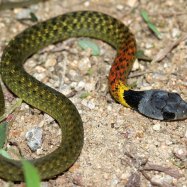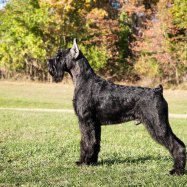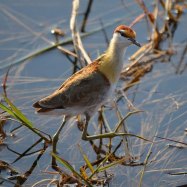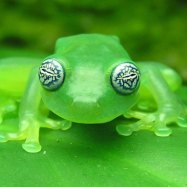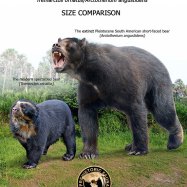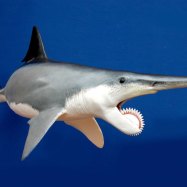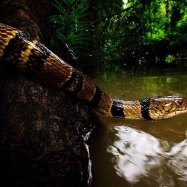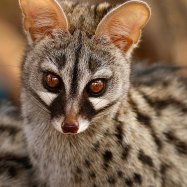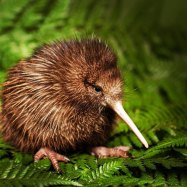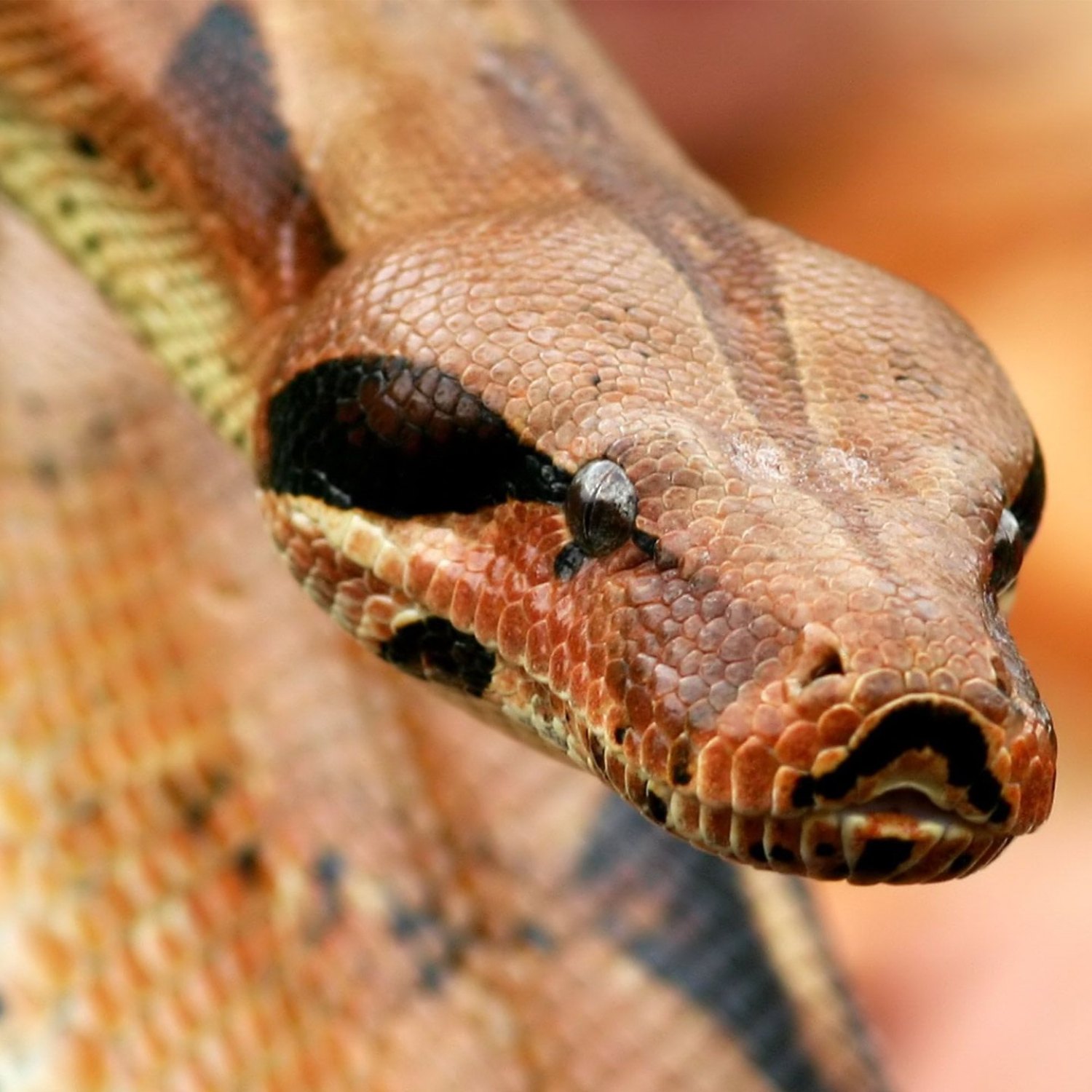
Red Tail Boa
Adults can reach lengths of 6 to 10 feet
The Red Tail Boa is a striking and popular snake species with a slender and elongated body shape. Adults can reach impressive lengths of 6 to 10 feet! Found on the ground and belonging to the Boidae family, these reptiles are known for their beautiful red-tipped tails. #AnimalsR #RedTailBoa #SnakeFacts
Animal Details Summary:
Common Name: Red Tail Boa
Kingdom: Animalia
Habitat: Tropical rainforests, savannas, semi-arid regions
The Beautiful Red Tail Boa: A Fascinating Snake with a Unique Character
When you think of snakes, what comes to your mind? Some might feel fear or disgust, while others might admire their beauty and strength. Regardless of your perception, one snake species stands out with its striking appearance and docile nature - the Red Tail Boa.This fascinating snake, scientifically known as Boa constrictor, is commonly known as the Red Tail Boa due to its distinctive red coloration on its tail. Found in the tropical regions of South and Central America, this snake has captured the attention of many reptile enthusiasts, earning a special place in the world of snakes Red Tail Boa.
In this article, we will delve deeper into the world of the Red Tail Boa, exploring its characteristics, habitat, and unique features that make it stand out from other snakes.
The Basics of the Red Tail Boa
Before we dive into the fascinating world of the Red Tail Boa, let's first understand its taxonomy and basic information. This will give us a better understanding of this remarkable snake.The Red Tail Boa belongs to the animal kingdom, Animalia, in the phylum Chordata, class Reptilia, order Squamata, and family Boidae. This family includes other large and non-venomous snakes such as the Anaconda and Burmese Python.
This snake has a slender and elongated body shape, with adults reaching lengths of 6 to 10 feet, making it one of the largest snake species in South America. Its body is covered in reddish-brown scales with dark patterns, giving it a striking appearance. But what makes this snake truly stand out is its red tail, which becomes more evident as it matures.
Habitat and Distribution
The Red Tail Boa is a native of multiple countries in South America, including Brazil, Bolivia, Peru, and Colombia Rottweiler Mix. They mainly inhabit tropical rainforests, savannas, and semi-arid regions, making them incredibly adaptable to various environments. In addition, they also do well in captivity, making them a popular choice among reptile owners.These snakes are mainly found on the ground, but they are also great climbers and can frequently be seen on tree branches. They are also semi-aquatic, which means they can swim and are often found near bodies of water.
Feeding and Diet
The Red Tail Boa is a carnivorous species, meaning that they feed on other animals. In the wild, they mostly prey on small rodents, birds, and even other reptiles. In captivity, they are fed with appropriately sized prey, such as rats or mice, every 2-4 weeks.These snakes are constrictors, meaning they wrap their body around their prey to suffocate them, rather than using venom like other snake species. They have a slow metabolism, allowing them to go for long periods without food, making them suitable for captivity.
Their Unique Character
What sets the Red Tail Boa apart from other snakes is its docile and gentle nature. Unlike most snakes that are known to be aggressive and defensive, these snakes have a calmer temperament, making them popular pets among reptile owners.Their docile nature can be attributed to the fact that they are ambush predators, relying more on their camouflage and surprise attacks than their defensive mechanisms. They also have a slow movement, which adds to their calm demeanor.
In addition, these snakes are also known for their inquisitive nature, often showing interest in their surroundings and their owners. This makes them fascinating creatures to observe and interact with.
Another interesting aspect of the Red Tail Boa is their ability to alter their coloration. This is known as heterochromia, and it allows them to change their skin's color depending on their surroundings and mood. This makes them even more intriguing and unique.
The Myth and Reality of Constricting
The Red Tail Boa is also subject to many misconceptions, especially when it comes to their ability to constrict their prey. Many people believe that they are aggressive and dangerous snakes that can easily overpower humans.However, this is far from the truth. While these snakes have the ability to constrict and kill their prey, they are not aggressive towards humans unless they feel threatened. They are generally docile and relaxed creatures, making them unlikely to attack unless provoked.
In addition, these snakes require a lot of time, effort, and patience to learn the proper handling techniques and gain their trust. Proper handling and care should always be practiced to ensure the safety of both the snake and its owner.
The Conservation Status of the Red Tail Boa
Like many other snake species, the Red Tail Boa is facing threats to its survival, primarily due to habitat destruction and illegal hunting for its skin and meat. Although there are still large populations of these snakes in the wild, it is essential to take measures to protect and preserve their natural habitats and populations.Fortunately, many organizations and reptile enthusiasts are actively working towards conserving and protecting the Red Tail Boa. In addition, captive breeding programs have also been established to reduce the demand for wild-caught specimens and preserve genetic diversity.
The Fascinating World of Red Tail Boas in Captivity
Aside from their popularity as pets, the Red Tail Boa has also gained attention in the world of breeding and genetics. Breeders have been able to produce various morphs of this species, leading to a range of color and pattern combinations. These morphs have become highly sought after by reptile enthusiasts, making the Red Tail Boa a valuable addition to any collection.In addition to their striking appearance, the Red Tail Boa is also known for its intelligence and curiosity. They can be trained to recognize and respond to their owner's voice and even interact with them. This makes them an excellent pet for those looking for a more engaging and interactive pet experience.
The Fascinating World of Natural Language Processing (NLP) and the Red Tail Boa
As we come to the end of our journey into the world of the Red Tail Boa, it is interesting to note that NLP can also be applied to analyze and understand more about this species. By processing and analyzing articles, research, and data regarding the Red Tail Boa, NLP can provide insightful information about their behavioral patterns, habitat preferences, and population trends.This can aid in conservation efforts and promote better understanding and care for these magnificent creatures, as well as other snake species. NLP can also be used to detect and analyze public perception towards snakes, creating awareness and addressing any misconceptions surrounding them.
In Conclusion
The Red Tail Boa is a spectacular creature, both in its appearance and behavior. Its unique characteristics and adaptability have made it a popular choice among reptile enthusiasts and wildlife enthusiasts alike. Through proper understanding and education, we can appreciate and protect this incredible species for generations to come.

Red Tail Boa
Animal Details Red Tail Boa - Scientific Name: Boa constrictor
- Category: Animals R
- Scientific Name: Boa constrictor
- Common Name: Red Tail Boa
- Kingdom: Animalia
- Phylum: Chordata
- Class: Reptilia
- Order: Squamata
- Family: Boidae
- Habitat: Tropical rainforests, savannas, semi-arid regions
- Feeding Method: Carnivorous
- Geographical Distribution: South America, Central America
- Country of Origin: Multiple countries in South America
- Location: Ground
- Animal Coloration: Reddish-brown with dark patterns on the body
- Body Shape: Slender and elongated
- Length: Adults can reach lengths of 6 to 10 feet
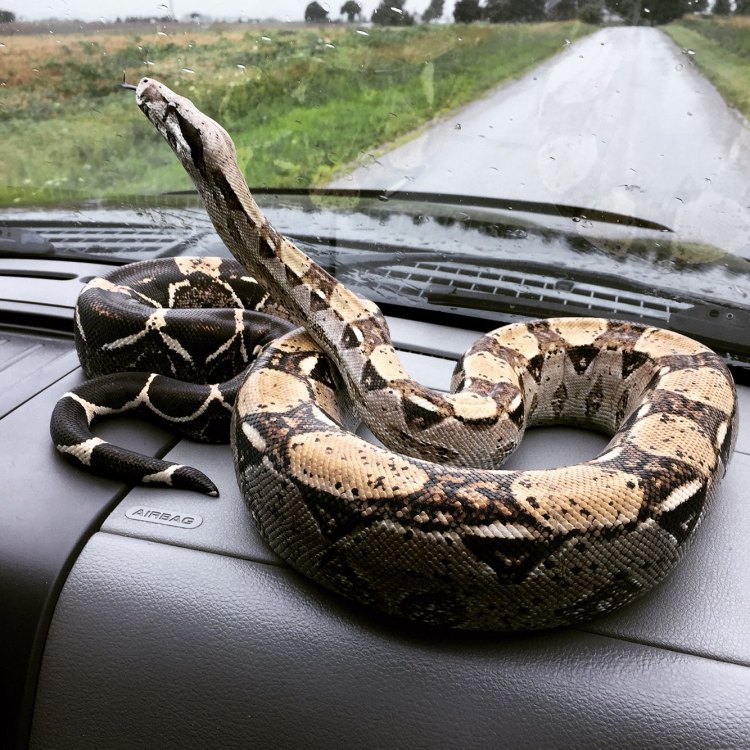
Red Tail Boa
- Adult Size: Large
- Average Lifespan: 20 to 30 years in captivity
- Reproduction: Sexual
- Reproductive Behavior: Breeding occurs during the rainy season
- Sound or Call: Hissing and rattling tail
- Migration Pattern: Non-migratory
- Social Groups: Solitary
- Behavior: Nocturnal and mostly arboreal
- Threats: Habitat destruction and illegal pet trade
- Conservation Status: Least Concern
- Impact on Ecosystem: Important role as predator and prey in the ecosystem
- Human Use: Popular as pets
- Distinctive Features: Ridge of scales along its back and large size
- Interesting Facts: Red Tail Boas are excellent climbers and constrictors
- Predator: Humans are the main predator
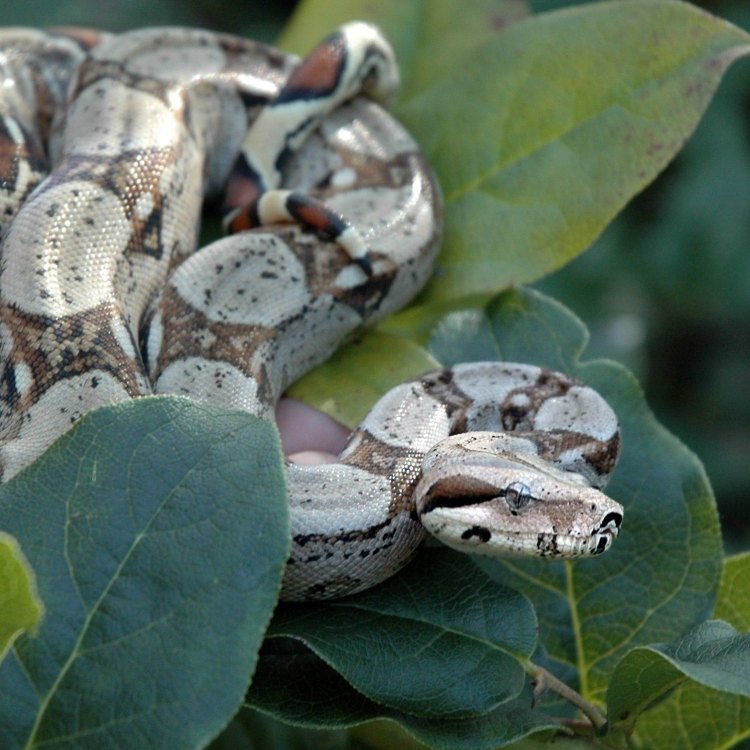
Boa constrictor
The Unique and Fascinating Red Tail Boa: A Marvel of the Reptile World
There's something intriguing about reptiles that captures the human imagination. From their ancient lineage to their unique adaptations, these creatures have fascinated us for centuries. Within this diverse class of animals lies the Red Tail Boa (Boa constrictor constrictor), a striking and powerful snake with a range of unique features that have solidified its place as a beloved member of the reptilian community.Native to the tropical regions of Central and South America, the Red Tail Boa is one of the largest and most popular species of constrictor snakes PeaceOfAnimals.Com. Let's delve deeper into the world of this stunning creature and discover what makes it so unique.
Adult Size: A True Giant in the Snake World
One of the distinguishing features of the Red Tail Boa is its large size. When fully grown, these snakes can reach an impressive length of 6-10 feet and weigh between 50-80 pounds, with females being slightly larger than males. This makes them one of the largest snake species in the world, second only to their close relative, the Anaconda.The sheer size of the Red Tail Boa is enough to impress anyone, but what's truly remarkable is their ability to climb and swim with such ease despite their bulk. Their strong and muscular bodies are perfectly adapted for their arboreal and semi-aquatic lifestyle, making them exceptional predators and survivors in their natural habitats.
Average Lifespan: A Lifelong Companion
Unlike other snakes that have relatively short lifespans, Red Tail Boas can live up to 20-30 years in captivity, with some individuals even surpassing the 40-year mark. This means that if you decide to bring one home as a pet, you are looking at a lifelong commitment.However, this longevity also makes Red Tail Boas excellent ambassador animals for conservation and education programs, as they can live long enough to establish strong bonds with their handlers and educate the public about the role of reptiles in our ecosystem Red Bellied Black Snake.
Reproduction: A Seasonal Affair
Similar to other snakes, Red Tail Boas reproduce sexually and are ovoviviparous, meaning they give birth to live young rather than laying eggs. However, what sets them apart is the timing of their breeding season, which is triggered by the onset of the rainy season in their natural habitats.As the rains flood their habitats, Red Tail Boas emerge from their hiding places in search of mating partners. During this time, the males engage in elaborate courtship displays to attract females. Once the female mates, she will give birth to a litter of 10-64 live baby snakes after a gestation period of four to six months.
Calls and Sounds: A Hissing and Rattling Serenade
While many animals use vocalizations to communicate, snakes are not known for their sounds. However, that's not entirely true for Red Tail Boas, who have a unique way of communicating through hissing and rattling their tails.When threatened, Red Tail Boas will often hiss loudly to warn predators or potential threats. In addition, their tails have a series of modified scales that create a rattling sound when shaken, giving a clear warning to potential predators. This behavior not only helps them stay safe but also adds to their reputation as formidable creatures.
Migration Pattern: A Stay-Put Species
Migration is a common phenomenon among many animals, but Red Tail Boas are not among them. These snakes are considered to be non-migratory, which means they don't travel long distances to seek food, shelter, or breeding grounds. Instead, they tend to stay within a defined home range throughout their lives, which can be as small as a few acres or as large as several square miles.Social Groups: A Solitary Lifestyle
Unlike some snake species that live in large colonies, Red Tail Boas are solitary creatures and prefer to avoid other snakes, except during the breeding season. They are known to be territorial and will fiercely defend their home range against intruders, including other snakes.However, if you keep multiple Red Tail Boas as pets, they can be housed together in large enclosures as long as they have plenty of space, hiding spots, and access to food and water.
Behavior: Nocturnal and Mostly Arboreal
Red Tail Boas are crepuscular animals, meaning they are most active during dawn and dusk. However, they can also be active at night, making them primarily nocturnal animals. This adaptability to low-light conditions helps them hunt more efficiently, as many of their prey species are also active during these times.In addition, Red Tail Boas have excellent climbing abilities, thanks to their strong, prehensile tails and sharp claws. This unique adaptation allows them to grip onto trees and bushes and climb with ease in search of prey or during flight from danger.
Threats: Habitat Destruction and Illegal Pet Trade
Like many other animal species, Red Tail Boas face a variety of threats in the wild, with habitat destruction being one of the biggest. As human populations continue to grow and expand into their natural habitats, these snakes are facing loss of their homes, food sources, and breeding grounds.In addition, the illegal pet trade also poses a significant threat to the survival of Red Tail Boas in the wild. These gorgeous snakes are highly sought after as exotic pets, leading to over-harvesting from the wild and destruction of their populations. It's important to realize that these animals are not suitable pets for everyone and require proper permits and education to provide them with a suitable environment.
Conservation Status: Least Concern
Despite facing some threats in the wild, Red Tail Boas are currently listed as a species of Least Concern by the International Union for Conservation of Nature (IUCN). This means that they are not considered to be in immediate danger of extinction, but their populations are still being closely monitored for any changes.However, it's essential to continually assess the status of these snakes and ensure that conservation efforts are in place to protect their natural habitats and regulate the pet trade.
Impact on Ecosystem: An Important Role as Predator and Prey
As with any species, Red Tail Boas play a significant role in the ecosystem in which they reside. As predators, they help control populations of rodents and other small mammals, keeping their numbers in check. In turn, these snakes also serve as prey for larger predators, such as eagles, jaguars, and other big cats, further contributing to the balance of the ecosystem.In captivity, Red Tail Boas also play an important role in the education and conservation of their wild counterparts, raising awareness about the importance of preserving these animals and their habitats.
Human Use: A Popular Pet, but Not for Everyone
The popularity of Red Tail Boas as pets cannot be denied. They are strikingly beautiful creatures with a range of unique behaviors and adaptations that make them fascinating to observe. However, it's crucial to understand that owning a snake, especially one as large and long-lived as a Red Tail Boa, is not a decision to be taken lightly.These snakes require a significant investment of time, money, space, and knowledge to thrive in captivity. They need large enclosures, properly regulated temperatures, a well-balanced diet, and regular veterinary care. Additionally, they can live for several decades, so their care is a long-term commitment. Therefore, it's essential to do thorough research and seek expert advice before deciding if a Red Tail Boa is the right pet for you.
Distinctive Features: A Ridge of Scales and Large Size
The Red Tail Boa is a truly unique species, both in terms of appearance and behavior. One of its distinctive features is the formation of a line of enlarged scales along its back called the "keel." This ridge of scales gives the snake a rough, bumpy appearance and provides additional grip and stability for climbing.In addition, their large size, powerful bodies, and intricate patterns of red, brown, and black markings make them highly recognizable in the wild and in captivity.
Interesting Facts: A Boa Unlike Any Other
As we continue to explore the world of Red Tail Boas, the list of intriguing facts about these creatures goes on and on. For instance, did you know that Red Tail Boas are not venomous and kill their prey by coiling around them and squeezing until they suffocate? Also, they have an incredible sense of smell, thanks to their forked tongues that they use to pick up scent particles in the air.Another fascinating feature of Red Tail Boas is their ability to change colors. Depending on temperature, humidity, and mood, these snakes can vary in color from bright red and orange to deep brown and black. This color change helps them camouflage and regulate their body temperature, making them even more adaptable to their environment.
Predator: Humans – The Main Threat to Red Tail Boas
While Red Tail Boas have many predators in the wild, including jaguars, boas, and birds of prey, it's humans who pose the most significant threat to their survival. From loss of habitat to overexploitation for the pet trade, human activities have significantly impacted these snakes and their populations in the wild.As such, it's our responsibility to protect these animals and their habitats to ensure their survival for generations to come.
In Conclusion
The
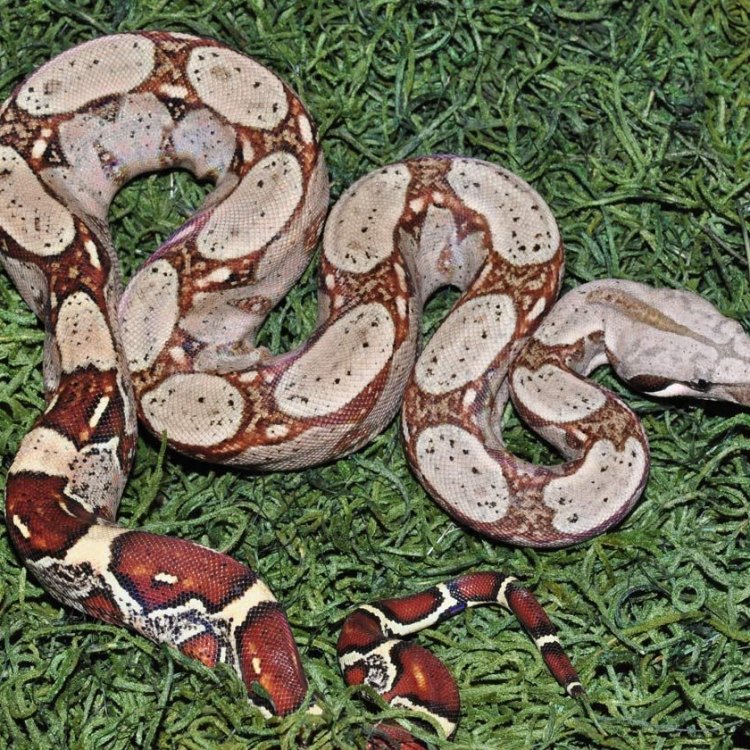
The Beautiful Red Tail Boa: A Fascinating Snake with a Unique Character
Disclaimer: The content provided is for informational purposes only. We cannot guarantee the accuracy of the information on this page 100%. All information provided here may change without prior notice.

